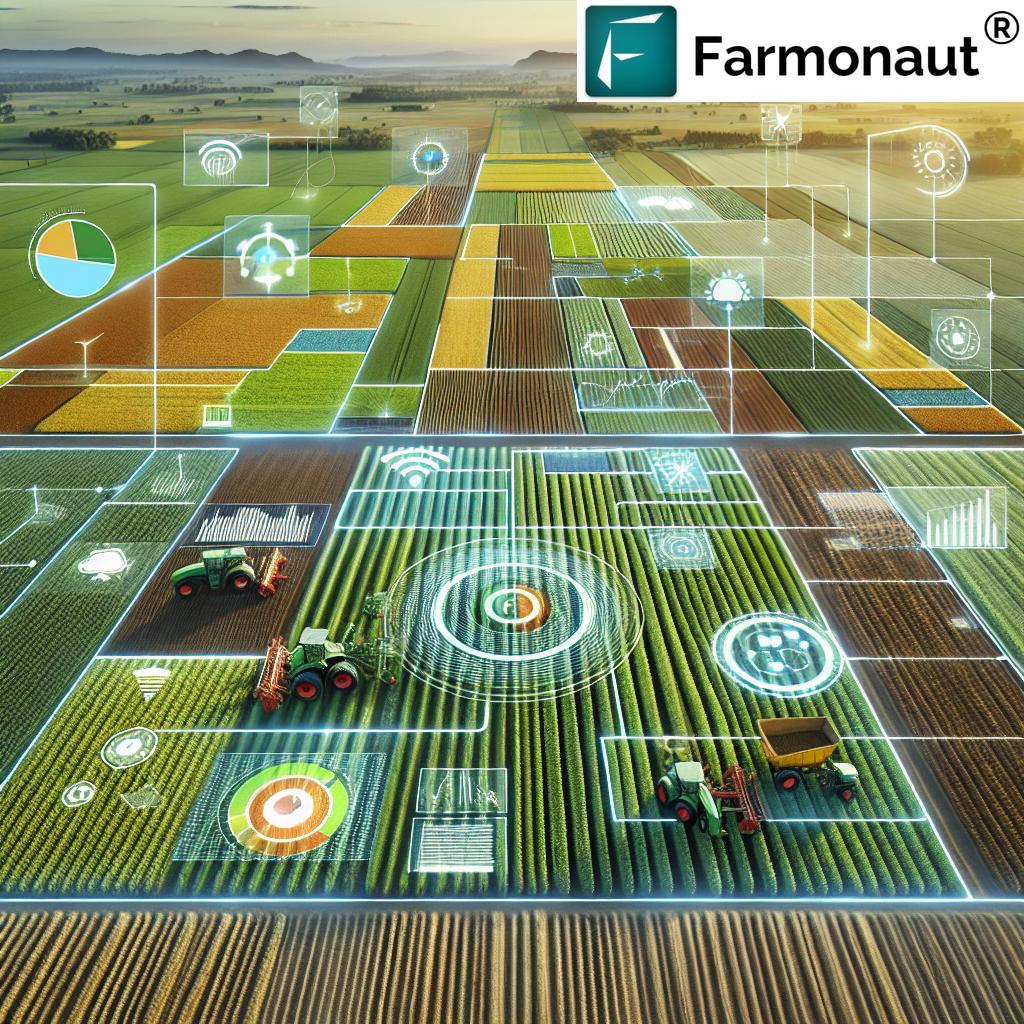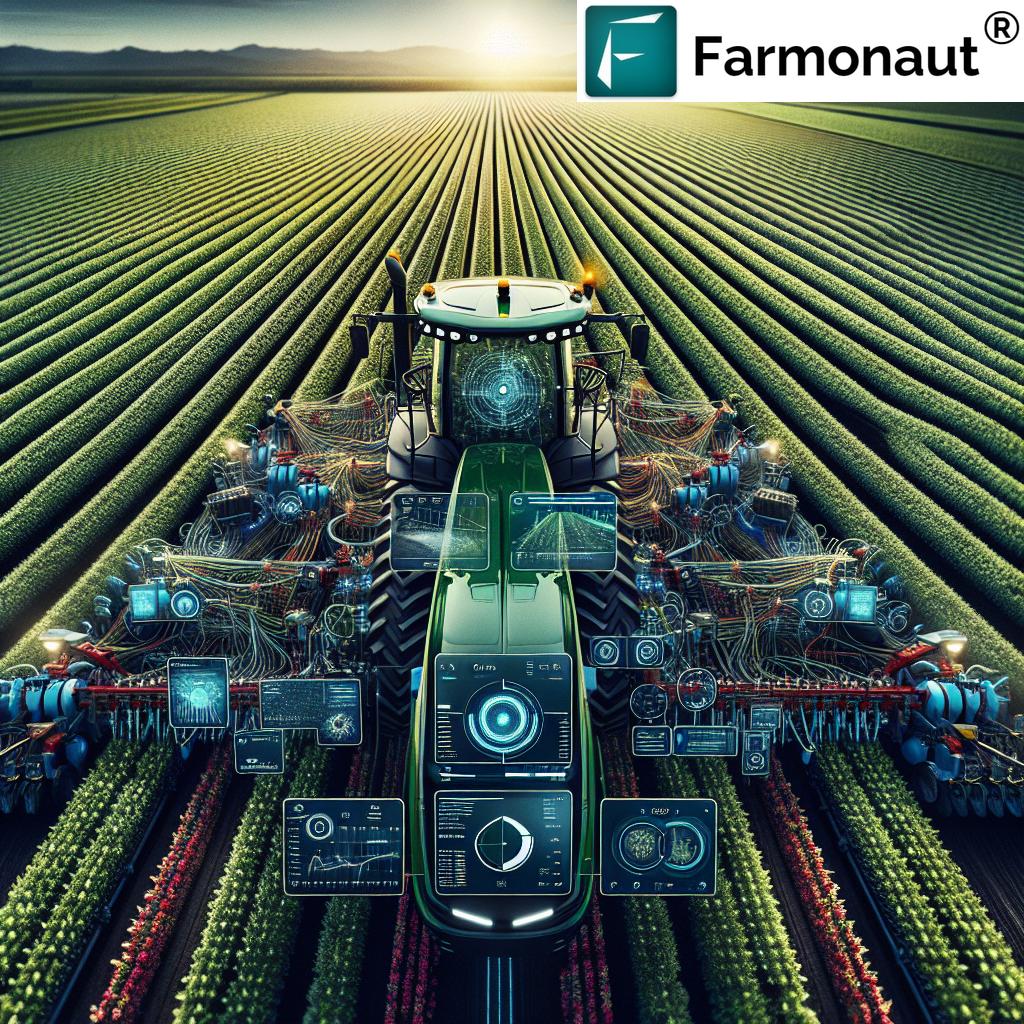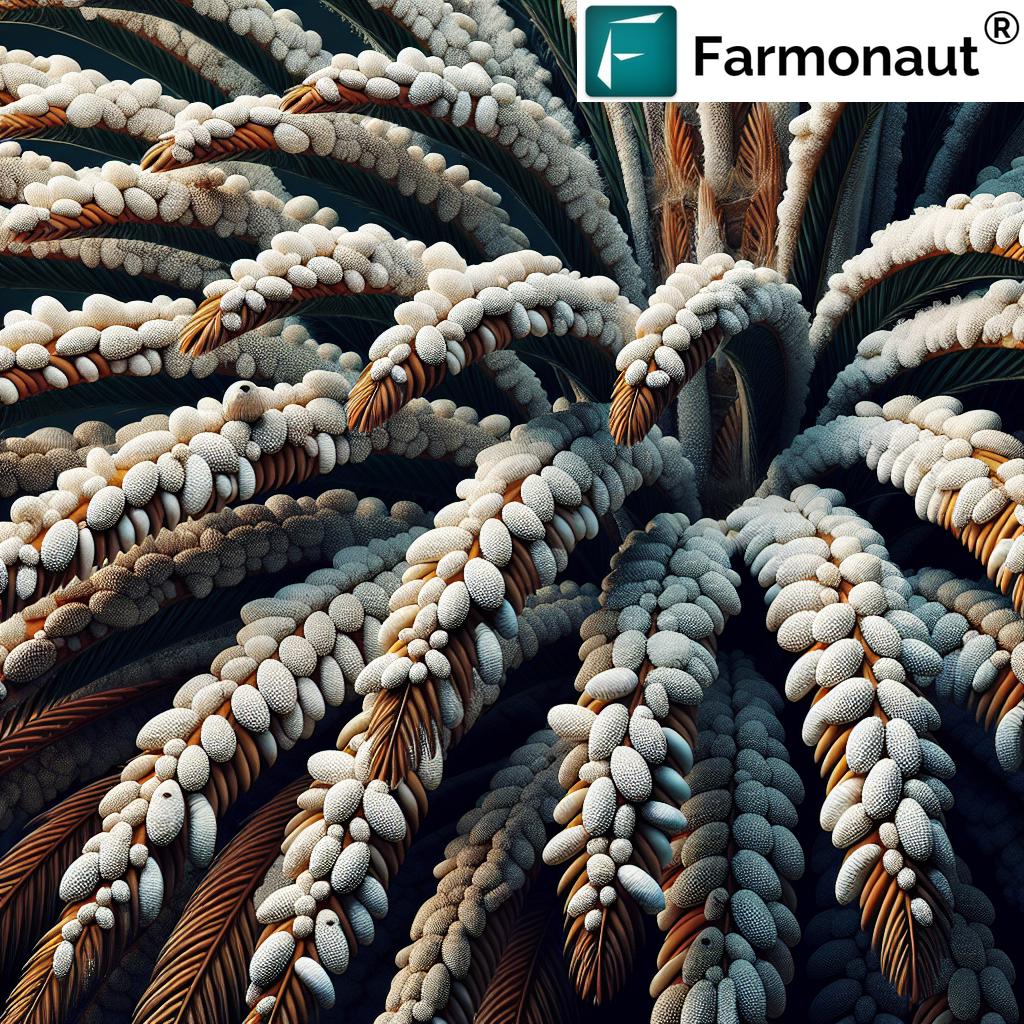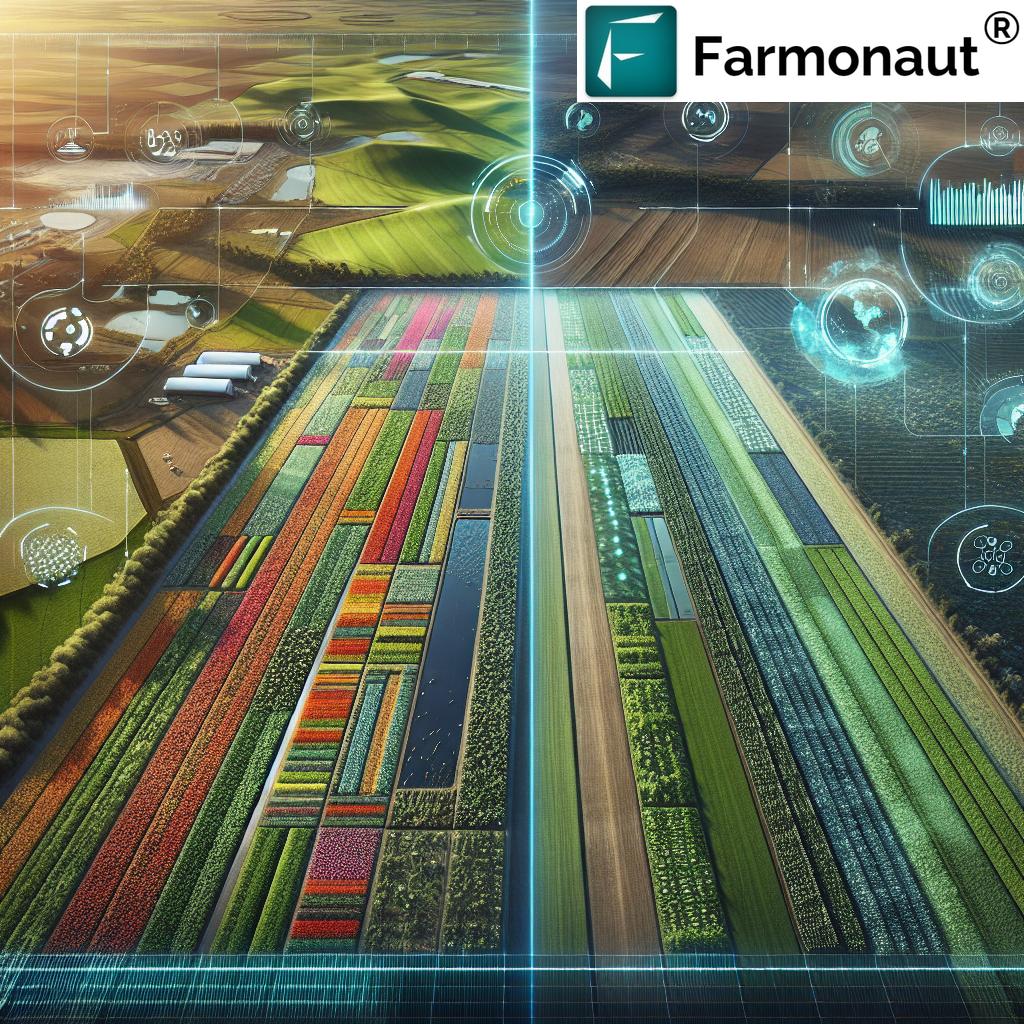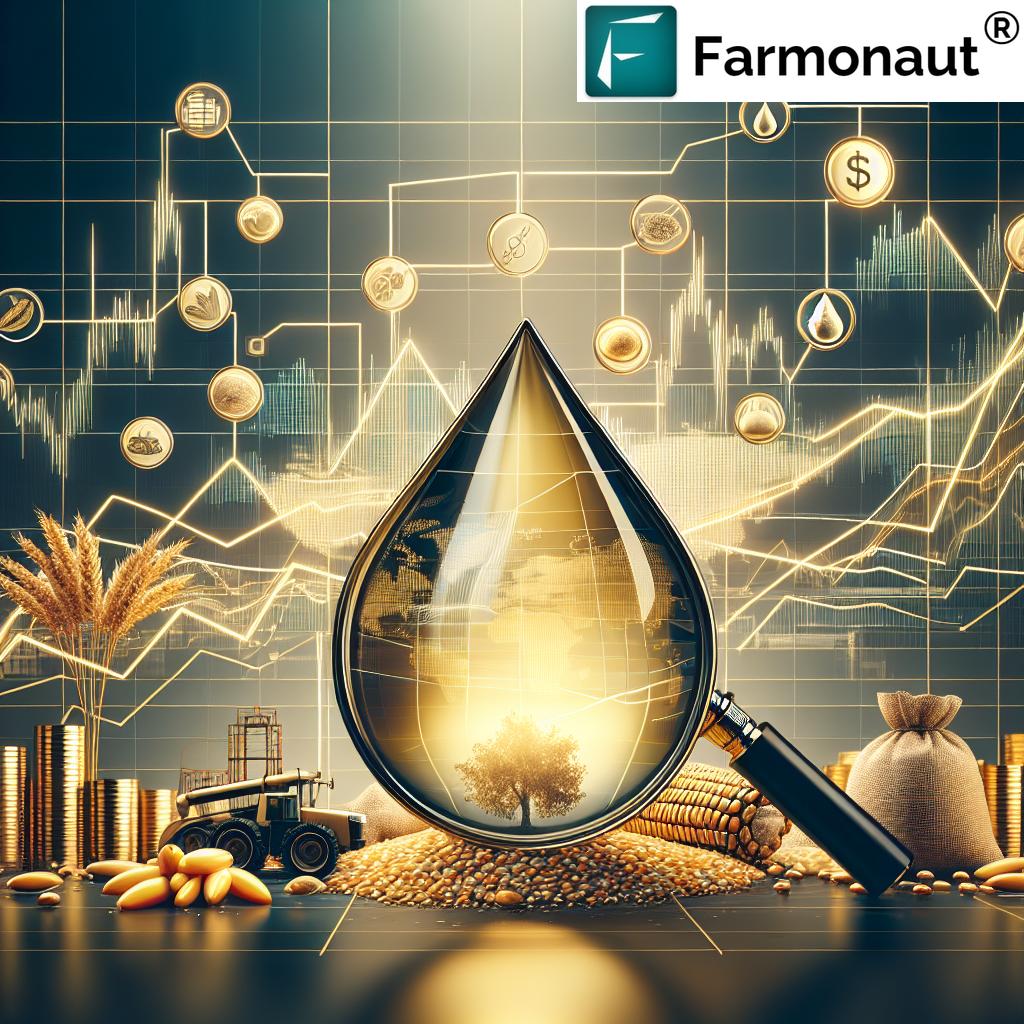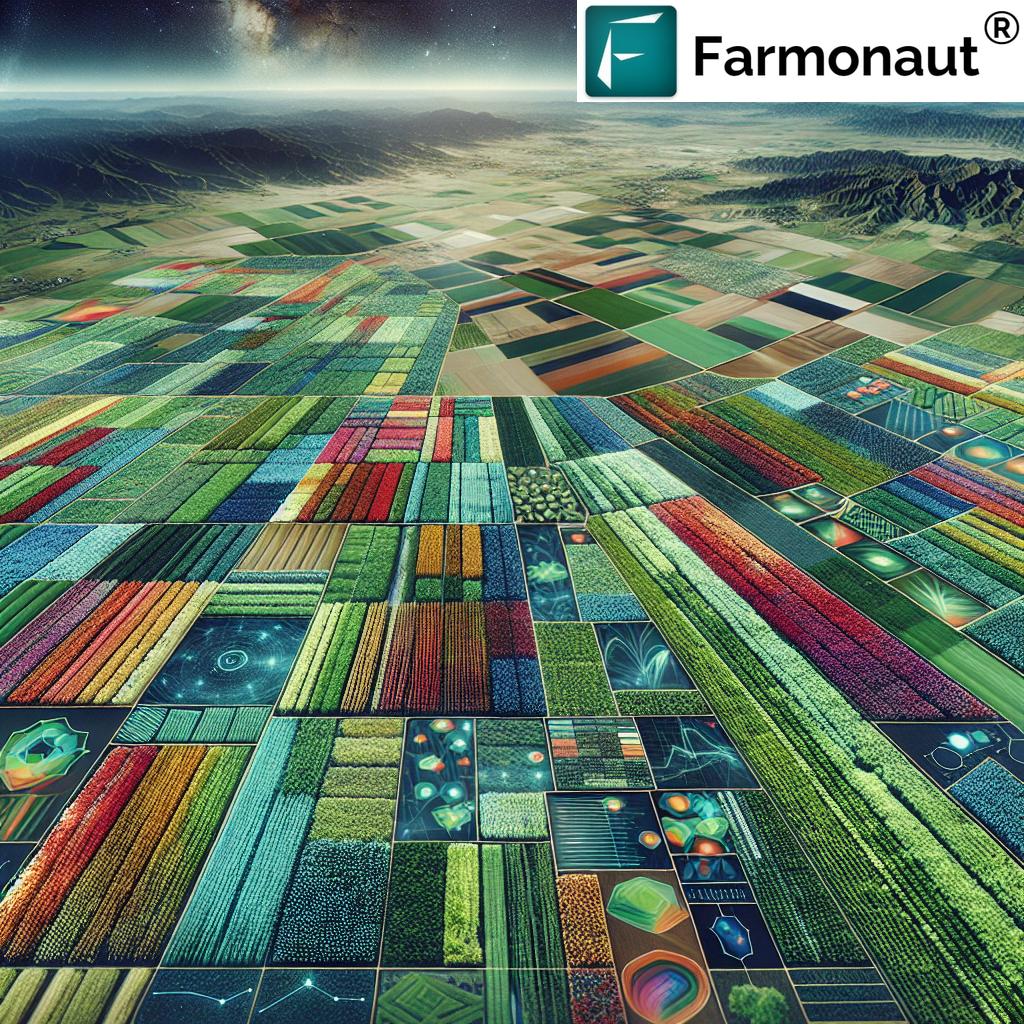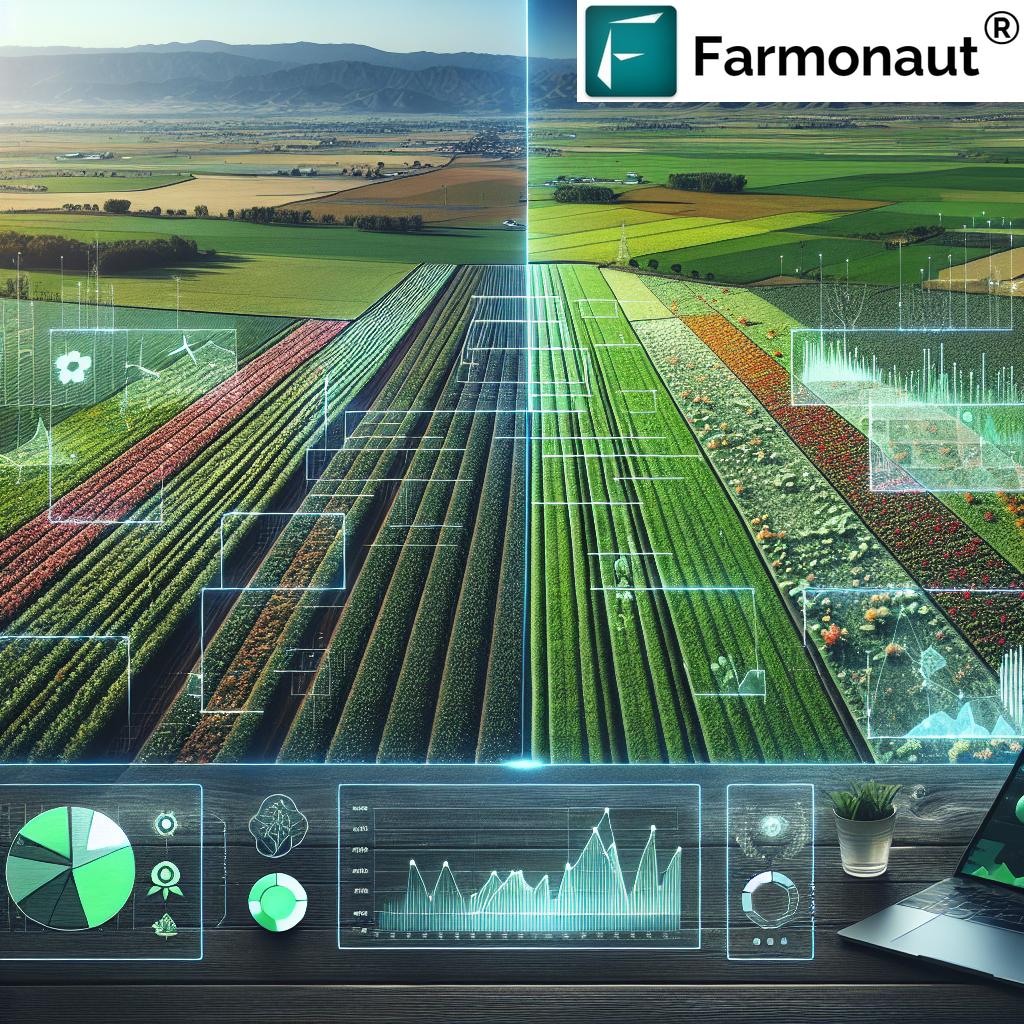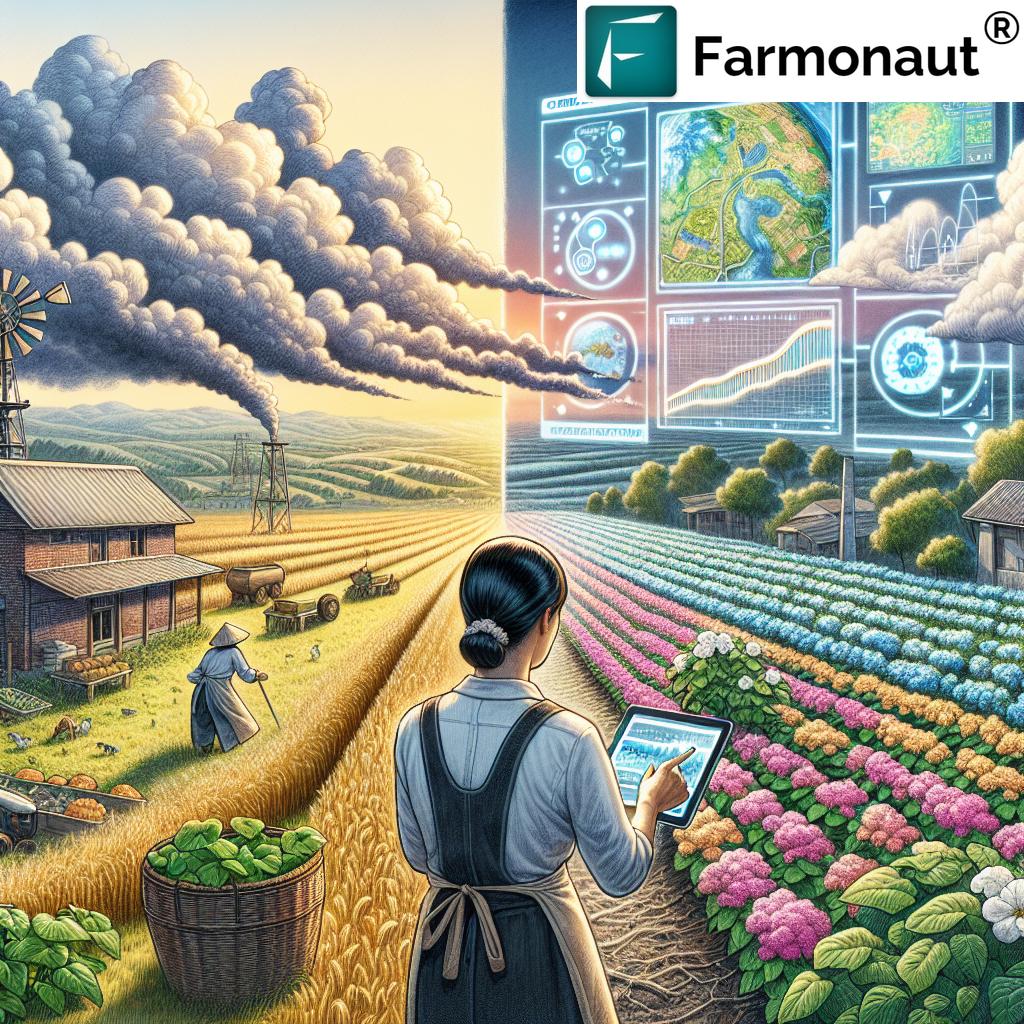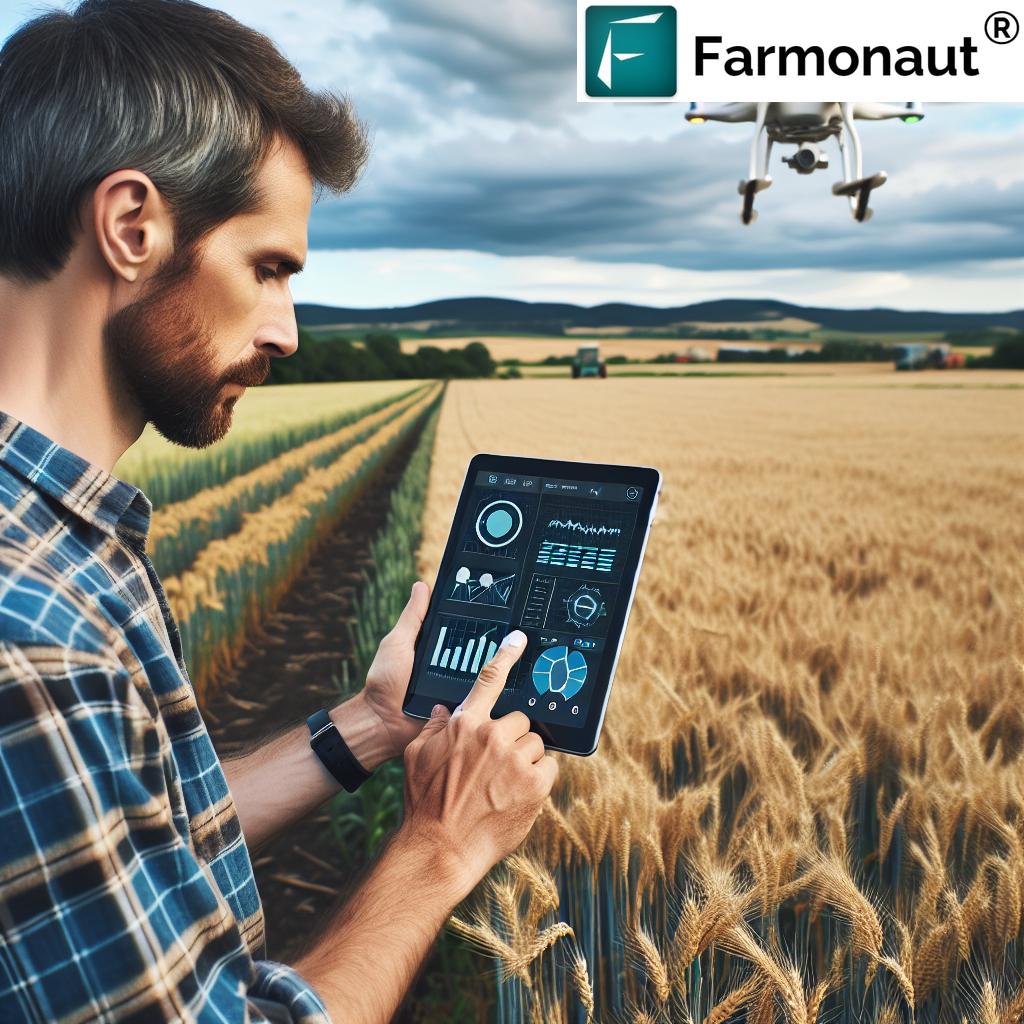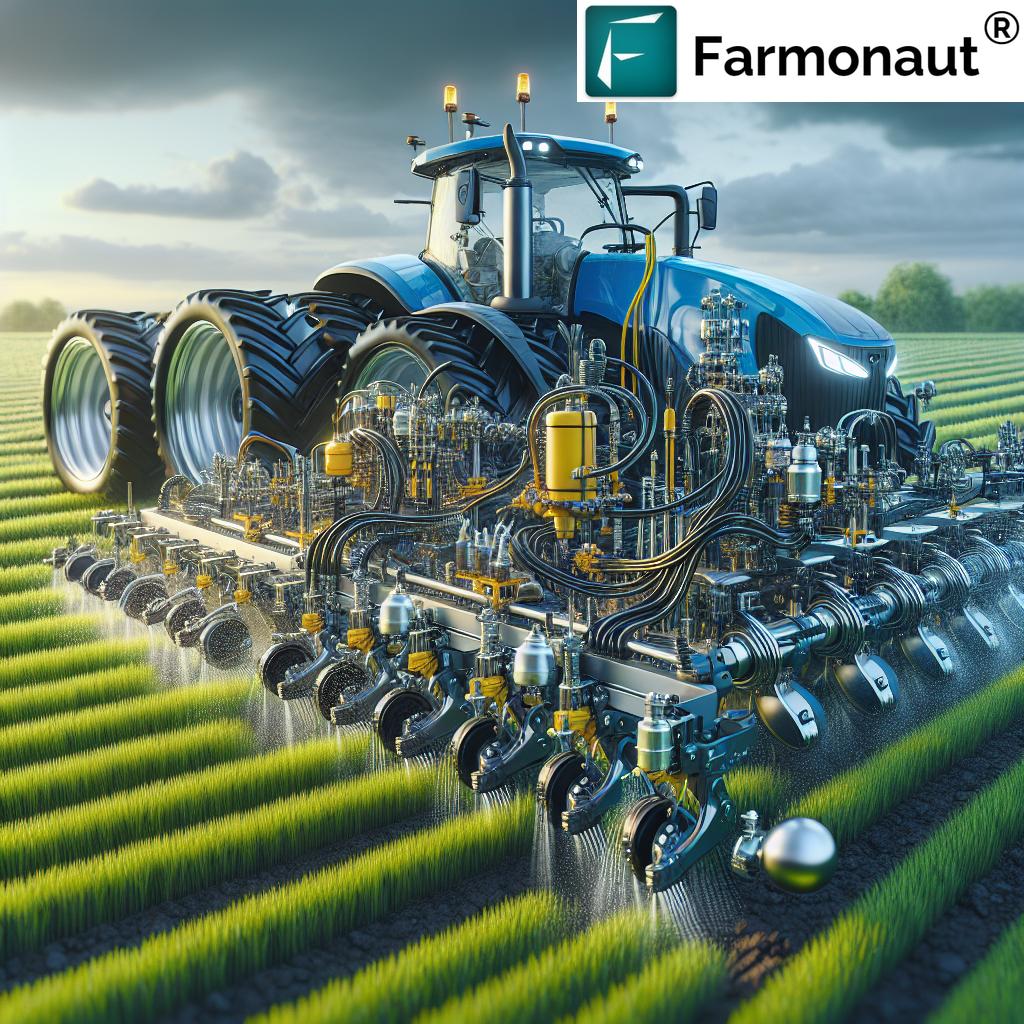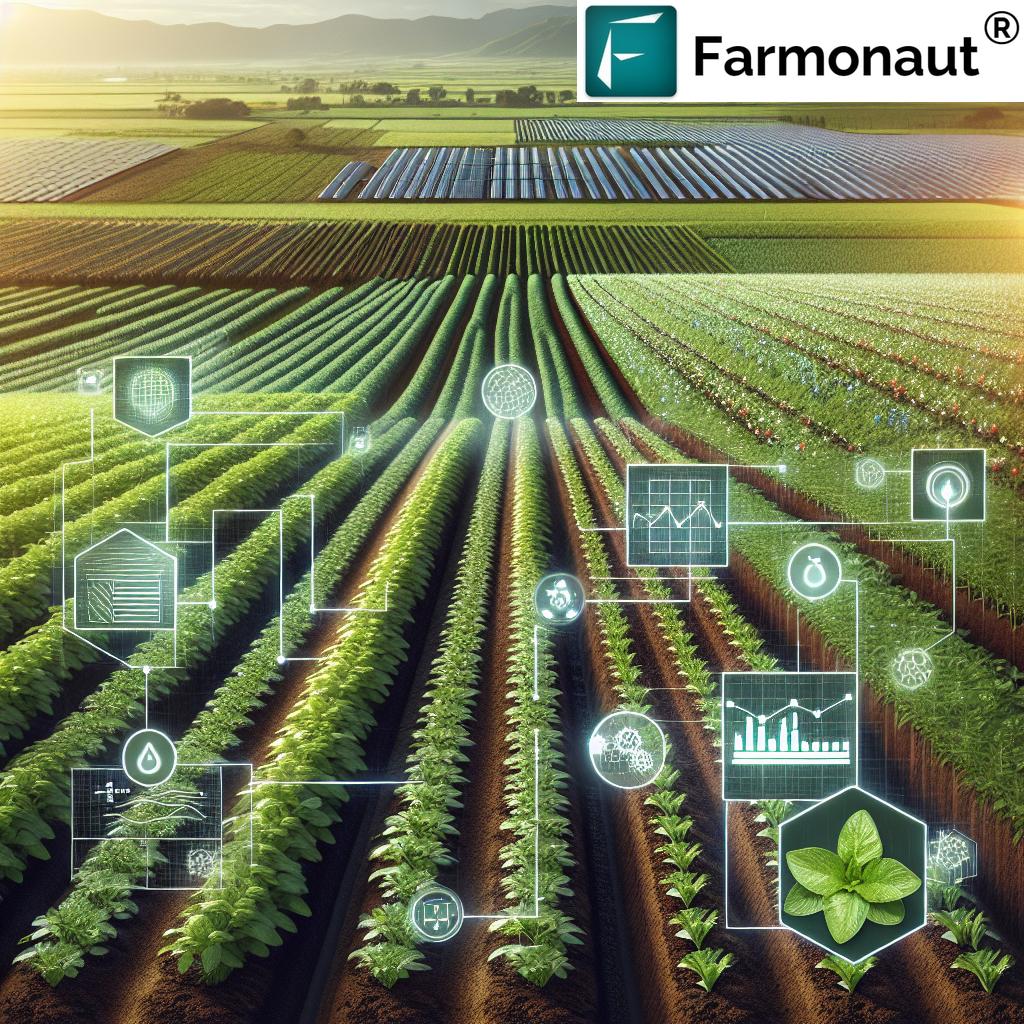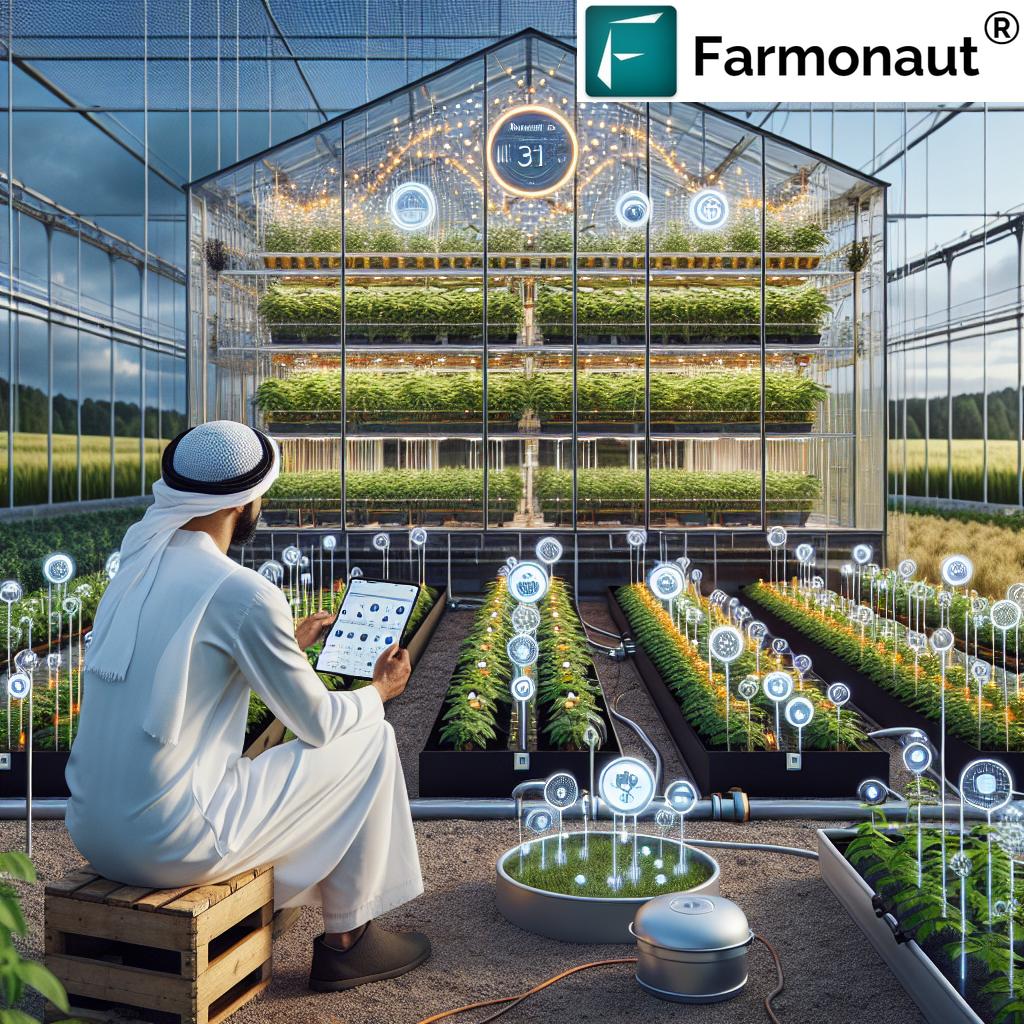7 Precision Agriculture Systems Transforming Farm Success
“Over 70% of modern farms now use GPS-guided tractors for precise planting and harvesting.”
- Overview: Precision Agriculture & Farm Management Systems
- Key Components of Precision Agriculture Systems
- Comparison Table of Precision Agriculture Systems
- 1. GPS and GIS in Agriculture
- 2. Variable Rate Technology Agriculture (VRT)
- 3. Remote Sensing & Drone Imagery for Crop Analysis
- 4. IoT Sensors in Farming
- 5. Data Analytics for Sustainable Agriculture
- 6. Advanced Farm Management with AI & Blockchain
- 7. Precision Livestock Farming Systems
- The Future of Precision Agriculture
- FAQ: Precision Agriculture
- Start Your Precision Agriculture Journey
Overview: Precision Agriculture & Farm Management Systems
Precision agriculture—also known as precision farming—represents a groundbreaking shift in modern agricultural practices. By integrating advanced technologies such as GPS, IoT sensors, real-time data analytics, AI-driven insights, and drone imagery, we now have the unique ability to optimize every aspect of farm operations. This smart, data-driven approach suits everything from crops to livestock, transforming how farmers manage soil, water, fertilizers, pesticides, and farm equipment.
As practitioners and advocates of sustainable agriculture at Farmonaut, we’re excited by how these powerful systems enable resource conservation, reduce input costs in farming, and increase yields—all while promoting environmental stewardship. By using data with pinpoint accuracy, we can significantly advance efficiency and protect our planet for future generations.
Key Components of Precision Agriculture Systems
Understanding how the best precision agriculture systems work starts with recognizing their core components:
- Global Positioning System (GPS) & Geographic Information Systems (GIS): For mapping, navigation, and spatial analysis of fields.
- Variable Rate Technology (VRT): Adaptive application of fertilizers, water, and pesticides based on real-time data and field variations.
- Remote Sensing: Drones and satellites provide aerial imagery for crop, soil, and pest analysis.
- Internet of Things (IoT) Sensors: Real-time monitoring of soil moisture, temperature, humidity, and nutrient levels.
- Data Analytics & Machine Learning: Advanced algorithms for informed decision-making, yield forecasting, and anomaly detection.
- AI & Blockchain Technologies: Artificial Intelligence for advisory systems, plus blockchain for food traceability and transparency.
At Farmonaut, our satellite-based crop health monitoring, carbon footprinting tools, and traceability solutions combine all these best practices to make precision farming technology widely accessible—and highly actionable—for everyone from smallholder farmers to major agribusinesses.
Comparison Table of Precision Agriculture Systems
| System Name | Core Technology | Main Features | Estimated Yield Improvement (%) | Estimated Cost Reduction (%) | Sustainability Impact | Compatibility |
|---|---|---|---|---|---|---|
| GPS & GIS Field Mapping | GPS, GIS | Precise mapping, navigation, spatial data, field variability analysis | 10–20% | 10–15% | Reduces resource overlap, conserves fuel & time | All major crops, global suitability |
| Variable Rate Technology (VRT) | VRT, Sensors | Variable rate application, tailored inputs, automated machinery | 8–15% | 15–20% | Reduces fertilizer/pesticide runoff, improves soil health | Cereals, oilseeds, vegetables |
| Remote Sensing & Drone Imagery | Drones, Satellites, Cameras | Crop health monitoring, pest/disease detection, high-res imagery | 12–20% | 8–13% | Early interventions, targeted inputs, reduced impact | Global regions, all crops |
| IoT Sensors for Farming | IoT, Wireless Devices | Soil moisture/temp, real-time alerts, automated irrigation | 8–16% | 12–18% | Conserves water, prevents over-irrigation | Row crops, orchards, vineyards |
| AI & Data Analytics Platforms | AI, Machine Learning | Predictive analytics, anomaly detection, yield forecasting | 9–18% | 10–15% | Data-driven decisions, efficient resource use | Scalable, all farm types |
| Blockchain-Based Traceability | Blockchain | Transparent records, supply chain management, anti-fraud | Variable (supply chain focus) | Variable | Improves trust, reduces fraud, supports fair practices | Specialty crops, export chains |
| Precision Livestock Farming | Sensors, Wearables, IoT | Animal health, behaviour, productivity tracking | 6–14% | 8–12% | Animal welfare, efficient input use | Cattle, poultry, dairy farms |
“Precision agriculture systems can reduce fertilizer use by up to 20% through advanced data analytics.”
1. GPS and GIS in Agriculture
The backbone of precision agriculture lies in the use of GPS (Global Positioning System) and GIS (Geographic Information System) technology. These systems drive mapping, navigation, and data collection—empowering farmers to make radically informed decisions.
- GPS enables us to operate tractors and farm equipment with centimeter-level accuracy, ensuring no overlaps or gaps when planting seeds, applying fertilizers, or using pesticides.
- GIS software analyzes spatial data to create detailed maps showing variations in soil moisture, crop health, and field properties. For example, we can highlight which areas need more water or fertilizer, and which patches of soil require different management.
With large-scale farm management solutions by Farmonaut, you get robust GPS/GIS-powered field analysis for streamlined planning, monitoring, and resource allocation—no matter the scale of your farm or fields.
2. Variable Rate Technology Agriculture (VRT)
Variable Rate Technology (VRT) is revolutionizing the application of fertilizers, pesticides, and water across agricultural fields. Rather than treating all areas equally, VRT customizes input levels based on actual data—boosting both efficiency and sustainability.
- Sensors, IoT devices, and satellite imagery provide real-time analytics about soil health, moisture, and nutrient deficiencies in specific zones.
- VRT-enabled farm equipment adapts application rates as it moves, ensuring each patch of land receives precisely what it needs—nothing more, nothing less.
- This targeted approach reduces waste, minimizes environmental impact, and can materially reduce input costs in farming while still achieving optimal crop yields.
We recommend regular use of Farmonaut’s advisory and plantation solutions for precision input management, as these uniquely combine remote crop health monitoring with smart application maps.
3. Remote Sensing & Drone Imagery for Crop Analysis
Remote sensing—delivered by drones and satellites—has made it possible for farmers to monitor crop health, detect pest infestations, and assess soil or water stress far more efficiently than ever before.
- Multispectral cameras and aerial imagery capture NDVI (Normalized Difference Vegetation Index) data, revealing crop growth variances invisible to the naked eye.
- Regular drone flights or continuous satellite monitoring offer consistent insights into early-stage issues, like pest outbreaks, fungal spreads, or drought stress.
- Farmonaut’s advanced platform uses high-resolution remote sensing to deliver real-time field alerts and timely interventions.
This technology is vital for sustainable agriculture, as it drives more targeted pesticide and water use, resulting in increased yields and minimized environmental impact.
4. IoT Sensors in Farming
The Internet of Things (IoT) sensors are changing how we monitor soil health, manage irrigation, and even track crop growth in real time. By installing smart devices across our fields, we can collect key environmental metrics—moisture, temperature, pH, and humidity—to facilitate optimal decision-making like never before.
- Soil and weather sensors transmit continuous data to cloud analytics platforms, prompting immediate irrigation adjustments or resource allocation.
- The benefits extend to automated irrigation scheduling, helping reduce costs and water wastage across all crop types.
- IoT-integration with fleet and resource management tools—like those offered by Farmonaut—make logistics smarter, minimizing downtime and improving overall productivity.
IoT sensors belong at the core of any advanced farm management system aiming to optimize resource use and boost farm sustainability.
5. Data Analytics for Sustainable Agriculture
With the proliferation of data from sensors, satellite imagery, and drone flights, the most significant challenge has shifted from collecting information to extracting actionable insights. Enter data analytics and machine learning algorithms—delivering advanced analytics for sustainable agriculture at scale.
- Our systems process and analyze everything from soil health and crop moisture levels to historical weather and application rates.
- Predictive decision tools recommend the best planting times, ideal water and fertilizer schedules, and even yield forecasts.
- Farmonaut’s carbon footprint tracking is an excellent example—quantifying environmental impact based on analytics for smarter, compliant farming.
These capabilities not only reduce input costs in farming but also pave the way for optimized resource management—a win-win for productivity and sustainability alike.
6. Advanced Farm Management with AI & Blockchain
The real transformation in precision agriculture is unlocked when smart AI-driven advisory systems and blockchain-based traceability converge with traditional farm data streams. This is where platforms like Farmonaut shine, offering:
- AI tools (such as the Jeevn AI Advisory System) interpret real-time satellite data, weather analytics, and input logs to provide instant, customized recommendations for every stage of the farming cycle.
- Blockchain integration in product traceability solutions allows businesses, regulators, and consumers to track farm produce back to its origin, ensuring transparency and authenticity throughout the supply chain.
- Actionable dashboards deliver insights on farm resource management, compliance, and operational optimization in a single, user-friendly interface.
This holistic approach removes guesswork from decisions and builds trust in supply networks. Whether smallholder or enterprise, every farmer benefits from more predictable, profitable, and transparent operations.
7. Precision Livestock Farming Systems
While crop management often dominates the conversation, precision livestock farming (PLF) is equally critical for farm success. Here, advanced sensors and tracking devices monitor:
- Animal health and behavior, allowing for rapid interventions in case of illness or unusual activity.
- Productivity metrics such as milk yield, growth rates, or egg production in real-time.
- Environmental controls in dairy, poultry, and cattle operations, optimizing housing climate and feed schedules.
Integrating these technologies into advanced farm management systems reduces labor requirements, improves animal welfare, and leads to more efficient, cost-effective livestock farming.
The Future of Precision Agriculture
Looking ahead, precision agriculture is set to become even more innovative as we continue to develop:
- AI-Driven Technologies: Smarter algorithms will further refine analytics, optimize planting and harvesting schedules, and automate routine farm tasks.
- Robotics: Autonomous equipment for sowing, weeding, and picking is rapidly advancing, promising reduced labor costs and enhanced operational accuracy.
- Blockchain: Implementation in global food supply chains will ensure complete traceability, reduce food fraud, and build lasting consumer trust.
- API Integrations: As data becomes more accessible, APIs like Farmonaut’s Satellite & Weather Data API (See Developer Docs) will allow external software and research platforms to tap into real-world farm insights for local and global innovation.
At Farmonaut, we’re committed to keeping these technologies affordable, scalable, and accessible, ensuring every farmer—regardless of region or field size—can benefit from the ongoing agri-tech revolution.
To learn more about how precision agriculture can help with loans or crop insurance, see our relevant resources on crop loan and insurance verification.
FAQ: Precision Agriculture
-
What is precision agriculture?
Precision agriculture is an advanced farm management approach that utilizes technology—such as GPS, GIS, IoT sensors, drone imagery, and data analytics—to monitor and optimize crop and livestock health, resource usage, and productivity. -
How does GPS and GIS benefit farming?
GPS and GIS enable centimeter-level positioning and mapping within fields, ensuring precise application of inputs and uniform crop management practices, reducing overlaps and gaps, and saving on costs. -
What are the environmental benefits of using precision agricultural systems?
These systems reduce over-application of fertilizers and pesticides, conserve water via efficient irrigation, and promote overall sustainability—all of which lessen the environmental footprint of farming. -
Can small farmers access precision farming technologies?
Yes! Platforms like Farmonaut offer affordable, satellite-based crop monitoring and AI-driven advisory apps that make precision agriculture accessible even to small and medium-sized farms worldwide. -
How does blockchain improve agriculture?
Blockchain technology ensures product traceability and transparency across supply chains, reduces the risk of fraud, and increases consumer trust in food quality. -
Is precision livestock farming different from traditional livestock management?
Yes, precision livestock farming uses real-time sensors to monitor animal health, welfare, and productivity, enabling early intervention, efficient feeding, and improved animal management. -
Can these technologies help reduce input costs?
Absolutely. Targeted application of fertilizers, pesticides, and water—guided by analytics—can reduce input costs in farming by 10-20% or more, depending on the context.
Start Your Precision Agriculture Journey
Ready to optimize your farm with world-class precision agriculture tools? Explore Farmonaut’s subscription options below to unlock affordable, scalable crop health monitoring, AI advisory, and more:
Conclusion: Why Precision Agriculture Is the Future
From GPS-guided applications and variable rate input management to drone imagery for crop analysis, IoT sensors in farming, and data analytics for sustainable agriculture, we are stepping into a new era of agricultural innovation.
Farmonaut is at the forefront of this revolution, delivering advanced, affordable, and accessible precision agriculture solutions for all. Whether it’s maximizing field productivity, streamlining logistics, enhancing supply chain transparency, or shrinking your farm’s environmental impact, these 7 systems are transforming modern agriculture—one data point at a time.
Let’s embrace this transformation to ensure a brighter, more efficient, and sustainable farming future.
Unlock the full potential of your farm with Farmonaut. Take the first step toward smarter, more sustainable, and more profitable agriculture today!


